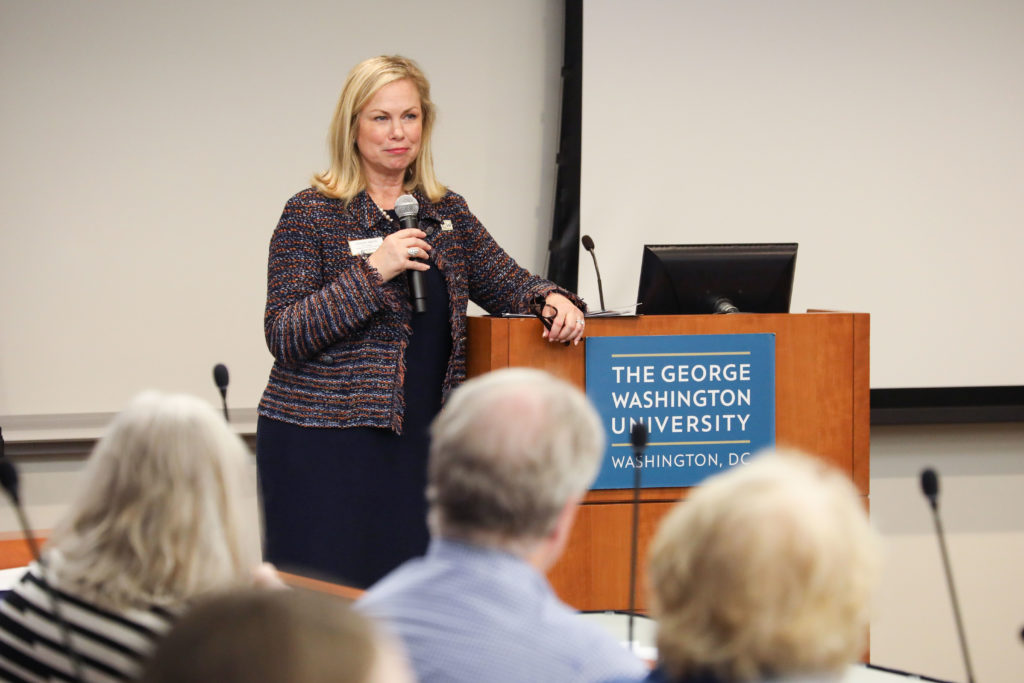The University experienced its third-best fundraising year last fiscal year, officials said.
Matt Lindsay, the assistant vice president of communications and marketing in the Division of Development and Alumni Relations, said the University raised more than $122.6 million during fiscal year 2019, which ran from July 1, 2018 through June 30, 2019. Philanthropy experts said the boost in donations can provide officials with discretionary funds to devote to University priorities but added that retaining donors is a persistent challenge for higher education institutions.
Donations increased nearly 6 percent from the previous year, when officials raised $115.7 million.
Lindsay said the money came from contributions from more than 22,000 donors, including more than 14,200 alumni. GW received the lowest alumni giving rate among its peer institutions for the second consecutive year in the 2018 academic year.
Lindsay said donations from the GW community support the costs of hiring University personnel, providing scholarships and fellowships to students and funding faculty research.
“We look forward to building on our momentum, retaining a greater share of our alumni donors and welcoming new alumni to the GW donor community in 2019-2020,” he said in an email.
Marci Paton, the executive director of annual giving at Villanova University, said donor retention is an important aspect of fundraising, but universities should also focus on developing strategies to attract new donors and boost fundraising levels.
“Your best donors are those who are already supporting your organization, so continue to ask for gifts from those who have given in the past, even if they have lapsed one or more years,” she said in an email. “Find ways to attract new donors, especially students who have the opportunity to give before they leave campus as part of a senior class gift effort.”
GW holds a senior class gift campaign annually, which has historically raised tens of thousands of dollars each year.
Paton said the donations fundraising staff collect often go toward general funds that officials have the discretion to spend on any priorities or issues that arise. Donors can also earmark their donation for a specific department or philanthropic fund – like the Athletics Buff and Blue Fund and the Power and Promise student aid fund – or specify their own priority, GW’s fundraising website states.
“Annual giving campaigns typically raise funds for unrestricted, budget-relieving support that allows a university to meet its most pressing needs, ranging from scholarship and financial to facilities maintenance, research projects and more,” she said. “A capital campaign may be focused on new infrastructure such as new or renovated buildings and campus transformation.”
Officials plan to unveil a new capital fundraising campaign in conjunction with GW’s bicentennial anniversary in 2021.
Kathy Laing, the program manager for the Institute on Philanthropy – which is housed within the University of Richmond’s School of Professional and Continuing Studies – said long-term donor engagement and development are key focus areas to retain donors and build a successful fundraising campaign.
“If you track those people and you develop those relationships over time, then those people will either become givers or continue to be givers,” she said. “As their financial situation improves and their involvement and engagement in the University improves, then they will become the larger givers over time.”
She said retaining donors year over year is a “national problem,” because donors often become disconnected if officials do not consistently engage with them.
“If you lose those relationships because your fundraisers are leaving, then you’ve got to start all over again,” she said.
Laing added that successful fundraising programs require a “top-to-bottom” approach that involves a strong philanthropy culture across GW. University President Thomas LeBlanc established philanthropy and constituent engagement as one of his top five initiatives when he arrived at GW two years ago.
“When you develop that culture within an organization, it’s inviting and it’s attracting,” she said. “It draws people to the University, and it keeps them there.”




